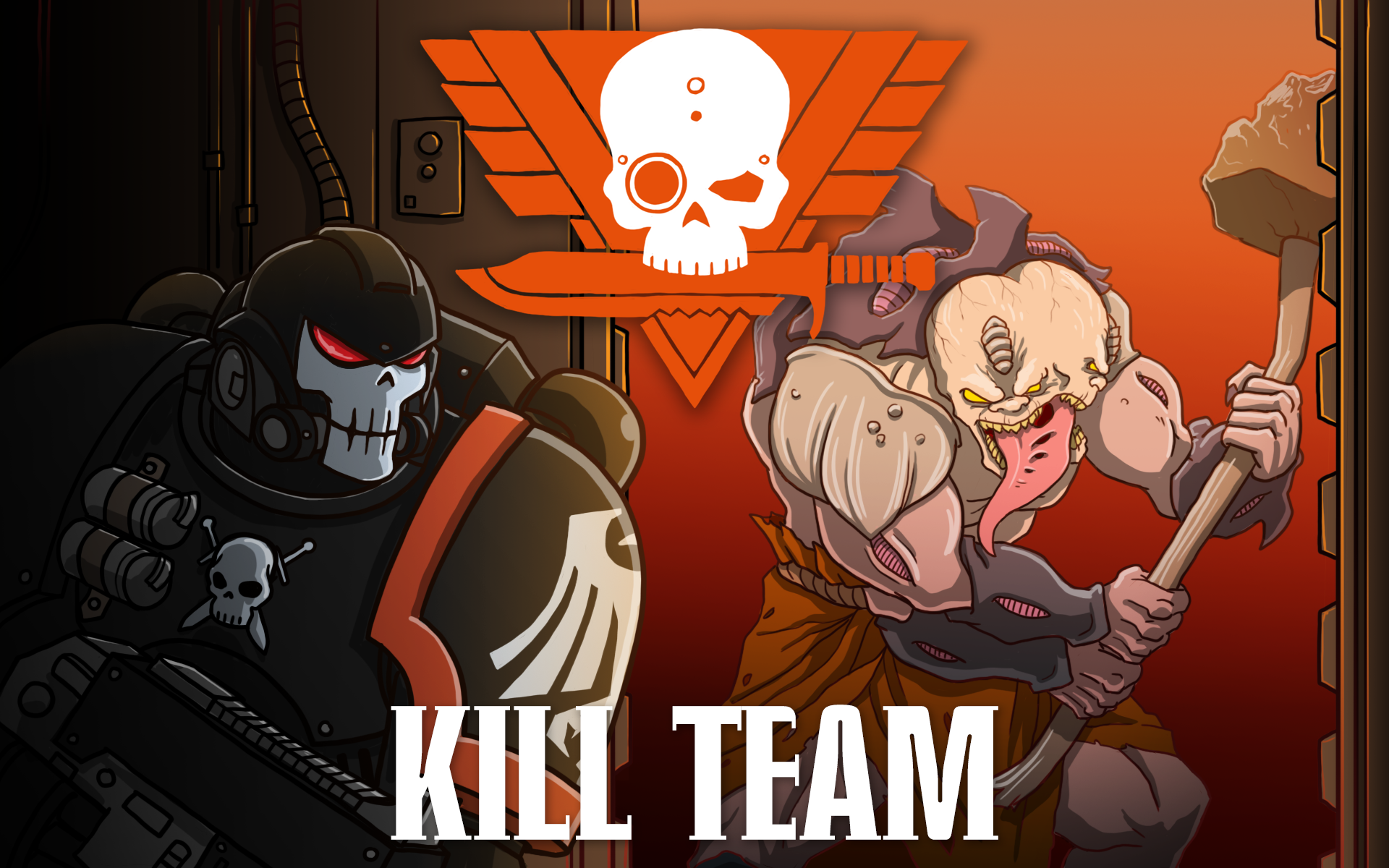Do you like to field hodgepodge teams of Imperial Weirdos? Do you long for the customization options of Inquisitor 28 in a more official and competitive game? Do you like to flash your Inquisitorial badge everywhere you go? Then the Inquisitorial Agents kill team may be the team for you! In this article, Fernando Marcos “Ace” is walking us through Inquisitorial Agents kill teams, their operatives, and how to play them.
Team Overview
Ah, the Inquisition; the most beloved faction of our Spanish colleagues, and one of the most complex to play. Armed with the largest roster space in the game – up to thirty models to choose from – and the possibility to choose auxiliary models from several classic Kill Teams (Arbites, Karskin, Veteran guardsmen and Navy breachers), this horde Kill team will delight players who enjoy precise positioning in games and having a wide breadth of options pregame. So take up your sword, brother, prepare your faith, and get ready to take on the dangers lurking beneath the galaxy’s blissfully ignorant surface.
Strengths:
- High model count – Being a horde gives you lots of activations, and means that you’ll usually have the final actions in a round.
- Adaptability – With four different auxilia options to choose from the Inquisitorial Agents are the game’s most flexible faction.
- A tool for every moment – You have a variety of melee and shooting options to choose from, so if you pick your fights, you can always find the best tool for every situation.
- Flexible Tac Op Selection – You have access to all of the Tac-op categories in the game, which means that each game can be oriented in different ways in your favor.
Weaknesses
- Fragile Operatives – You have few defensive mechanics to work with, and the majority of your operatives saving on 4+ or 5+ with 7 wounds means they’ll die pretty quickly.
- One-trick Pony Operatives – You have a lot of choices for your operatives, and each can do something effectively, but they can usually only do that one thing – your gunners will go down quick in melee and your melee combatants will go down quick to ranged attacks.
- Absolute Authority – One of the best ploys in the game, but to make good use of this ploy you need to have a solid understanding of every other faction’s ploys and how they’re used.
- Reliability – Shooting at 4+ and with difficult access to rerolls, you can suffer greatly if quarry doesn’t work.
Team Structure
An Inquisitorial Agents kill teams are built one of two ways: Either by selecting 12 Inquisitorial Agent operatives, the standard operatives available to the team, chosen from the list below:
- 1 Interrogator Operative
- 1 Tome-Skull
- 10 Agent operatives selected from this list:
- Autosavant
- Questkeeper
- Death World Veteran
- Enlightener
- Gun Servitor
- Hexorcist
- Mystic
- Penal Legionnaire
- Pistolier
You can only take each of those once, unless you aren’t taking any ancillary operatives, in which case you can take two Gun Servitors.
Alternatively, you can trade out five operatives from that group for one Ancillary Support option, letting you add operatives from other factions (see below).

Team Ability: Ancillary Support
The main ability of the Inquisitorial Agents is a passive one: Being able to “borrow” operatives from other Kill Teams; as Inquisitors we can take operatives from four other Imperial factions, usually adding them to our roster in groups of five or six. And if you can do the math you can already tell that we’re going to have to make some tough choices as there are six Ancillary Support options but at most only 23 slots to work with (more on that in a moment).
Your Ancillary Support options are:
- Sisters of Silence
- Tempestus Scions
- Exaction Squad (Arbites)
- Imperial Navy Breachers
- Kasrkin
- Veteran Guardsmen
Each of these have their own options for what you can take in terms of wargear and operatives, and they all give you five operatives except for Veteran Guardsmen and Breachers, which give you six operatives. When you add an Ancillary Support group to your roster, they lose their faction keywords and rules (except those listed on the datasheet) and instead gain the Inquisitorial Agents faction keyword.
In my opinion Navy Breachers are the best Ancillary Support option by far, and the one that you should be playing in 95% of your games. In the current meta I would only consider taking Karskin against Mandrakes; in any other case I would take Navy Breachers. Moreover, within Navy I usually take out the same 6 members: Axejack, Hatch-cutter, Endurant, Gunner (Plasma or Las), Grenadier, Comms.
I think the Arbites Exaction Squad might have some uses, but I hesitate to state them as I haven’t had enough experience with them, in any case I think even in such pairings Navy comes out on top, the extra operative is simply too powerful to pass up.
I have seen several people defend the use of the C.A.T. unit (from the Imperial Navy Breachers); in my opinion such operative is only useful for an aggressive play on the first turn. In addition said aggression is surely going to be a 4+ shot without re-rolls. Generally speaking I prefer not to risk operatives in such a gambit roll and while I see uses for the C.A.T in Navy teams, that’s not so much the case in Inquisition, although I do not doubt that paired with the Las-Volley it can do a good job.
Team Ability: Inquisitorial Mandate
Inquisitorial Agent kill teams have a max roster and dataslate limit of 30 operatives instead of 20. So you still have to make some choices, just not as many as you thought.
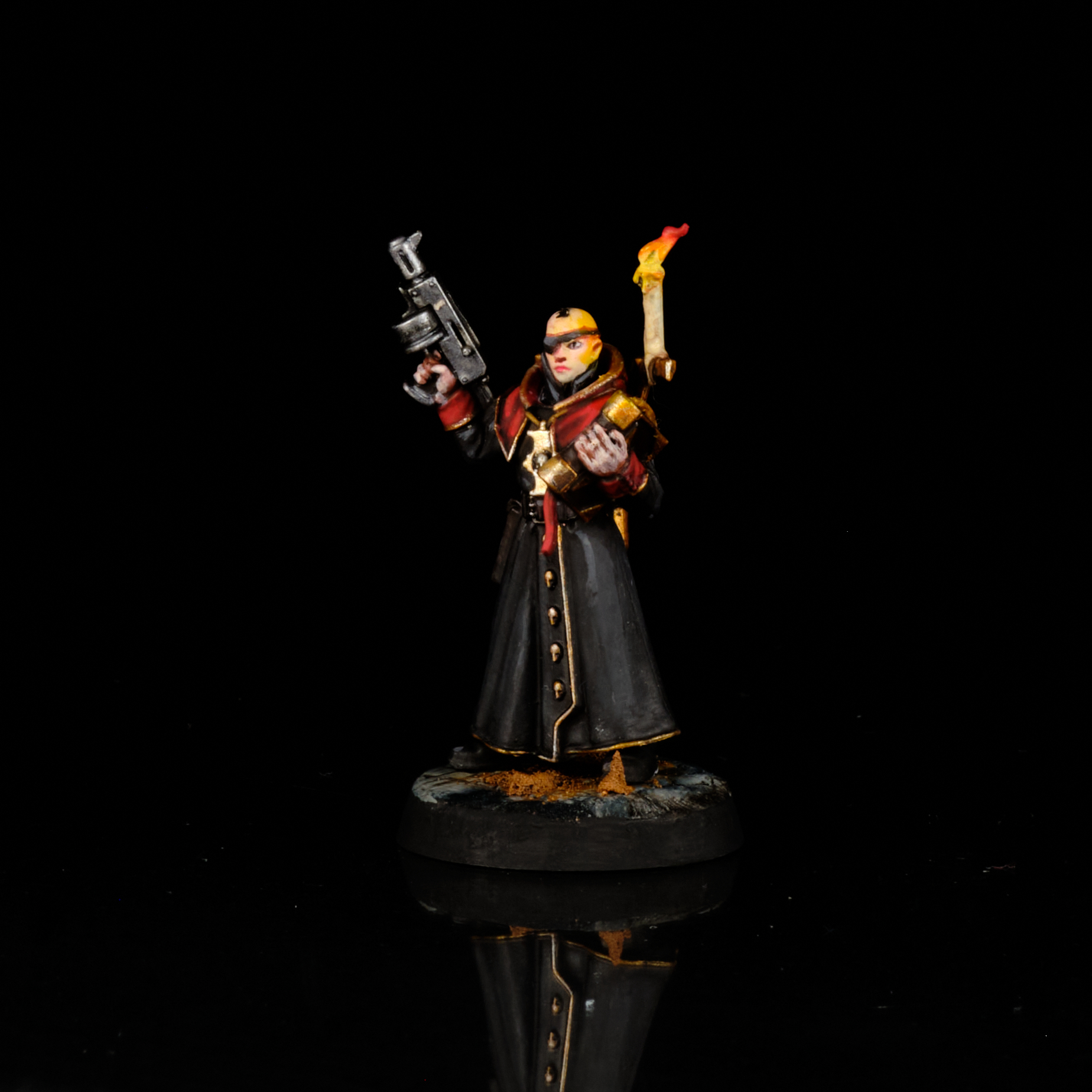
Operatives
This time and for the sake of my mental health, being such a large number of operatives I am not going to go through them one by one, that is what my initial article is for. In this case I prefer to group the operatives and make a brief explanation of my approach to play Inquisition.
There are generally several “fixed” operatives you want on your team if you’re playing with Ancillary Support options (in addition to the Leader and Servo-skull, which are mandatory choices):
- Gun Servitor (Plasma or heavy bolter)
- Mystic
- Pistolier
- Questkeeper.
The last of your five Inquisitorial Agent slots will be occupied 90% of the time by the Death World Veteran and the rest of the time by the Exorcist. Unfortunately in my opinion Enlightened and Penal Agent are just worse versions of the operatives already listed and rarely/never see the table in high level games.
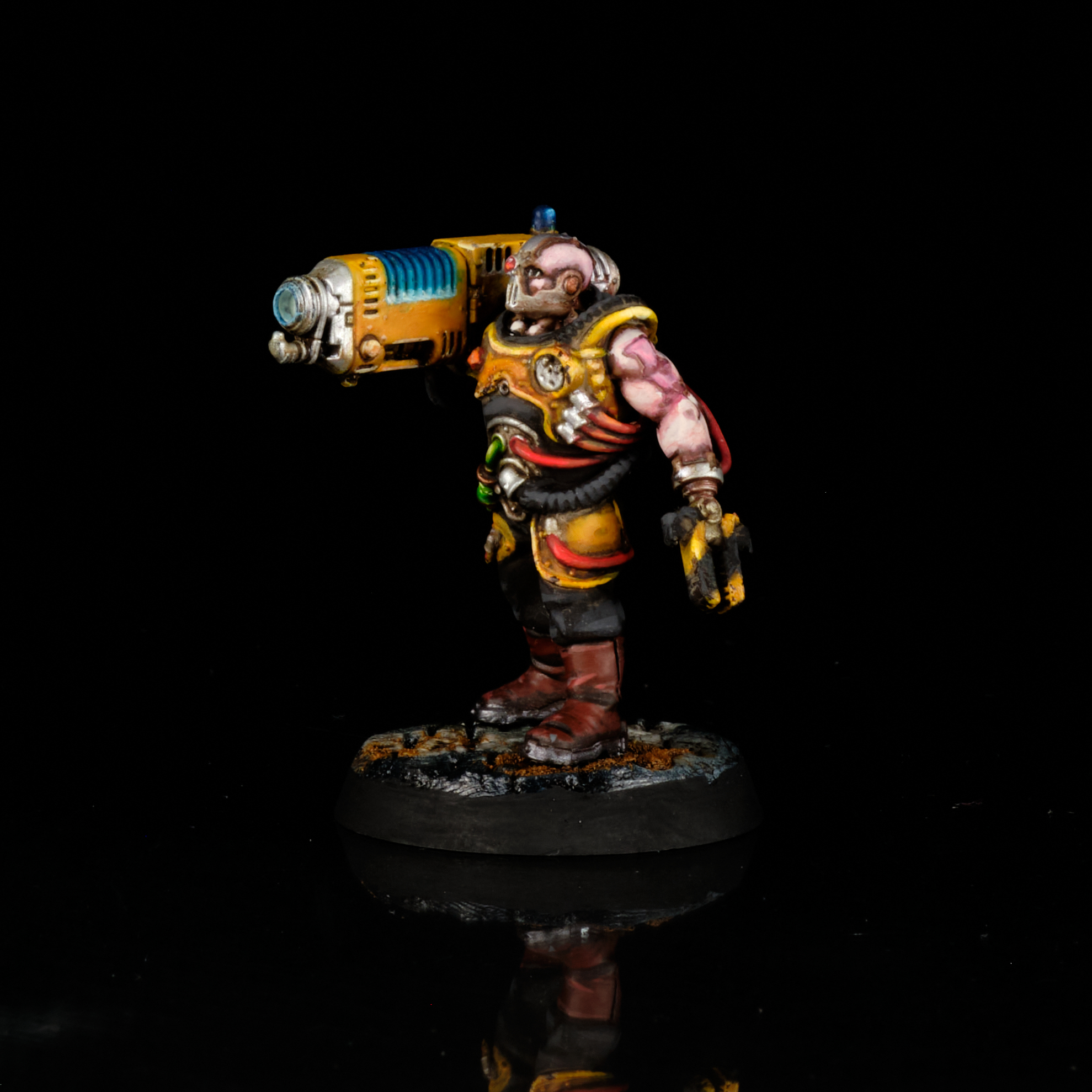
In my opinion Inquisition has five major groups of operatives which I play in different waves:
“Holders” or Anti-Charge Models
These are the operatives which will go to objective markers and will have to either be good at defending those points or causing serious damage to the enemy operatives.
In this first wave we will have the questkeeper and the veteran, the reason is simple, both have defensive tools to survive a charge (FNP and JAS) and both can efficiently kill normal operatives (8-10W) if the initiative is won in TP2. Of course as Holder there is also our endurant, but it is true that with 4 Mov he can only reach the closest targets which will be the ones under his protection (On Gallowdark terrain he can reach much more objectives if needed).
Chargers
These operatives work better charging the enemy and work as a second wave. Here we have the Axejack and the Hatch Cutter, operatives with a very high damage input and that are even more deadly if they’re the ones doing the charging (and not being charged).
DPS Shooters
On the other hand we have the DPS shooters: Among them we have the 2 gunners (Servitor and our Ancillary gunner operative), and the choice between who carries the plasma is relatively simple: Against elite teams you’ll always want to arm the servitor with a heavy bolter and give the plasma to the navy gunner, against the rest we must look at the map and think how much we can penalize having 2 heavy gunners. Other than that the pistolier is our best model on the KT and the most reliable so it has to be used with a lot of planning.
Aggressors
Our fourth group is the Aggressors. These are our operatives that can cause a great aggression in TP1 especially if we give +1APL with the Comms or use the Ploy Intense Scrutiny this are the granadier and maybe the pistolier if needed (or the mystic against hordes thanks to the indirect pistol).
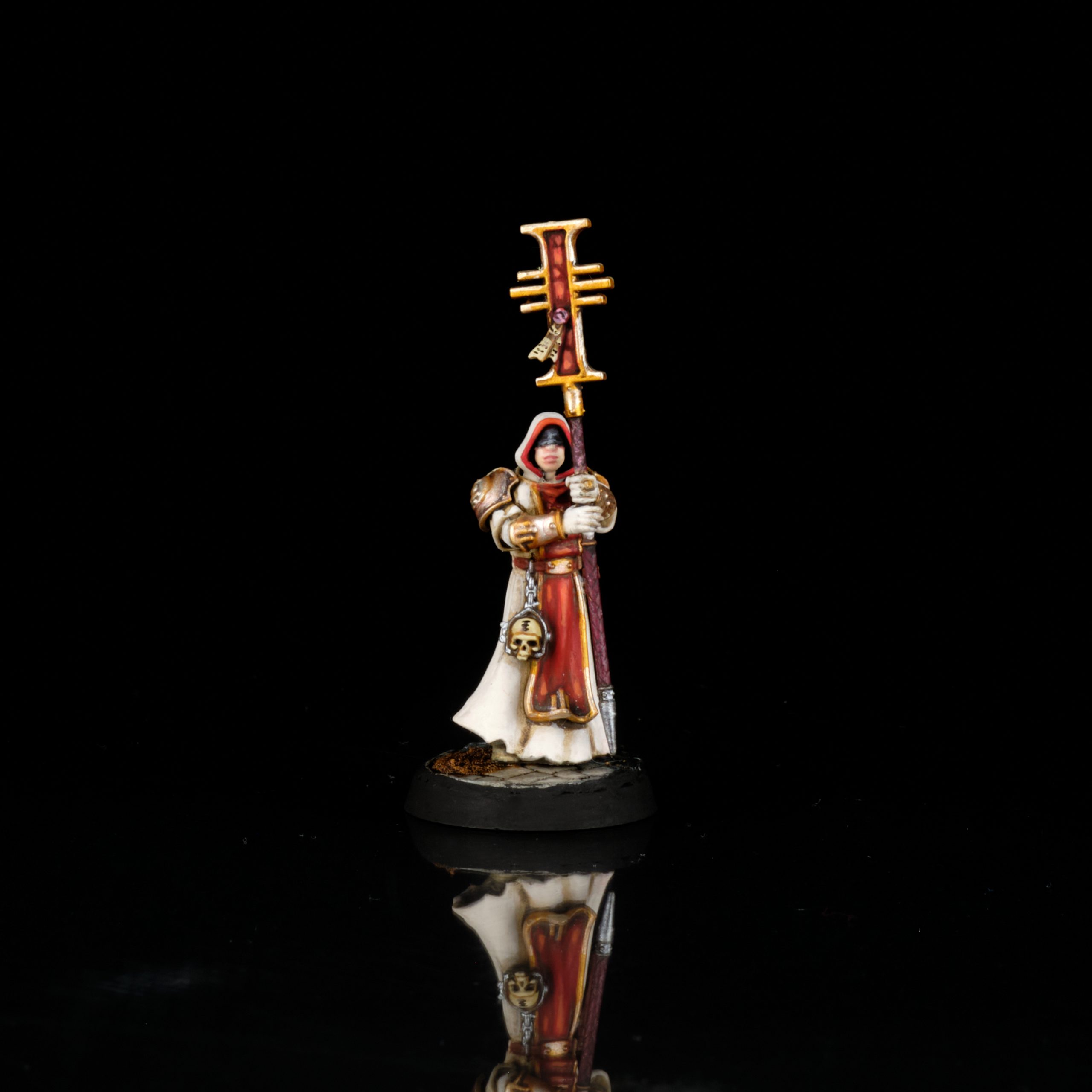
Supports
Finally we have the Supports. This group is made of the Mystic, the Tome-Skull, any Comms operatives you take from your Ancillary Support options, and the Leader can be flexible in that they’re particularly helpful in overcoming your 4+ rolls, either by giving you an extra die or improving the roll. Additionally both the Leader and the Mystic Agent in later turns can opt to take more aggressive positions, especially if their pistol has been upgraded.
One of the most fundamental parts of this Kill team is to know how to establish good coverage with the Tome-Skull’s aura, placing it in a position where it can not be blasted and gives protection against charges. In general I usually pair it with the Navis Endurant, who can use their Shield ability to turn the duo into a practically impenetrable bastion.
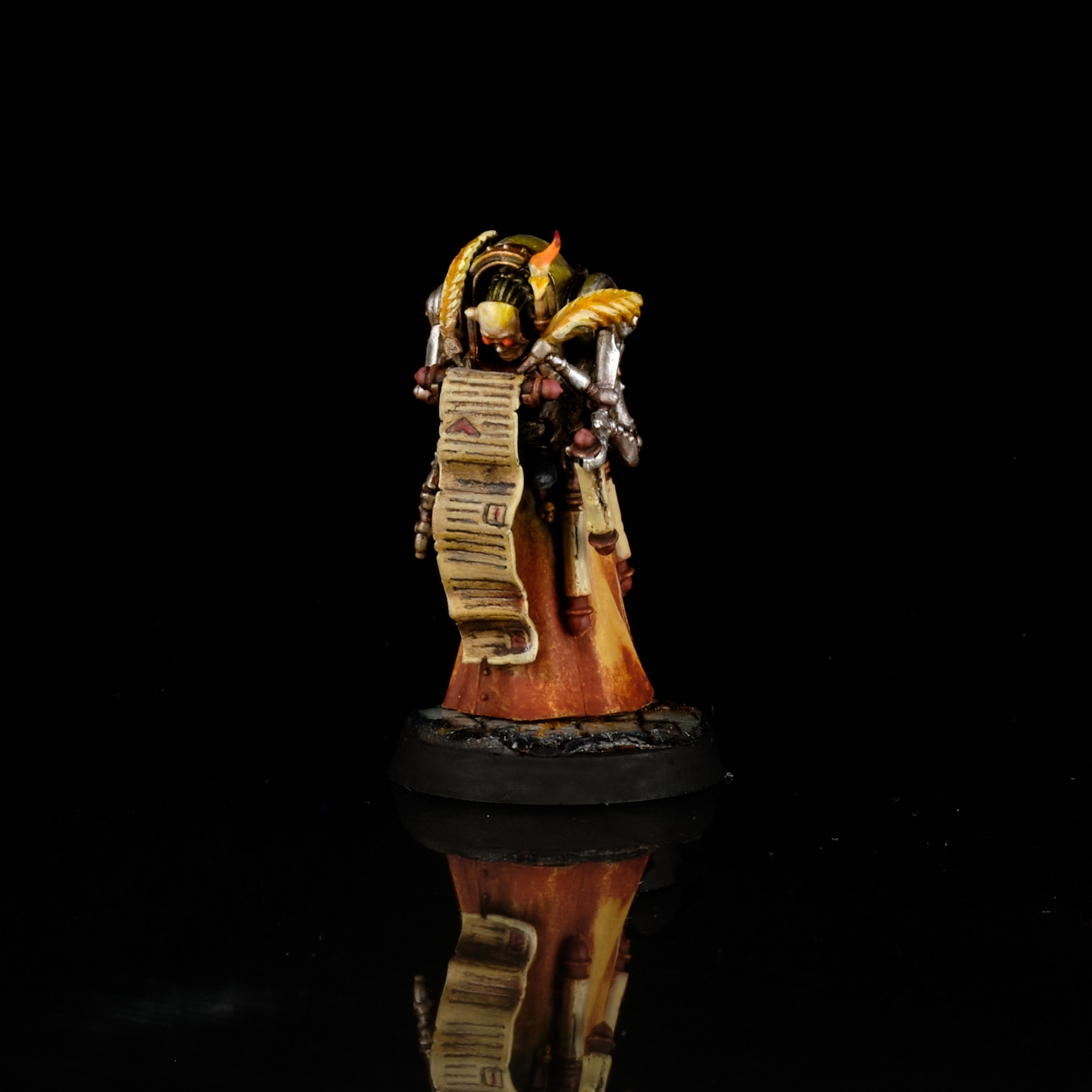
Ploys: Absolute Authority
We’re not going to cover all the ploys here, just the most useful options. And we’ll start with the most useful of all – Absolute Authority is a Tactical Ploy which costs 1 CP and can be used to stop an opponent from using any Strategic or Tactical Ploy except for Command Re-roll. They get the CP they spent back but can’t use the ploy again during that Turning Point.
As a result, good play with Inquisitorial Agents means knowing your opponent’s ploys so you have a good idea of when to use Absolute Authority to throw a spanner into the works for your opponent’s game plan.
Generally speaking, any time you can use Absolute Authority to cancel a dash ploy on the first Turning Point (such as the Into the Breach ploy for Veteran guardsman) is a good candidate to be canceled.
After the first turning point, what you cancel will depend heavily on whether you win or lose initiative – and you should have a plan for what to cancel in either situation. For example, if you’re playing against Kommandos and win the initiative maybe you have a wonderful play with the Questkeeper and want to cancel Just a Scratch, but if you lose the initiative it may be better to cancel Skulk About or another ploy that will result in dropping the enemy team’s efficiency overall.
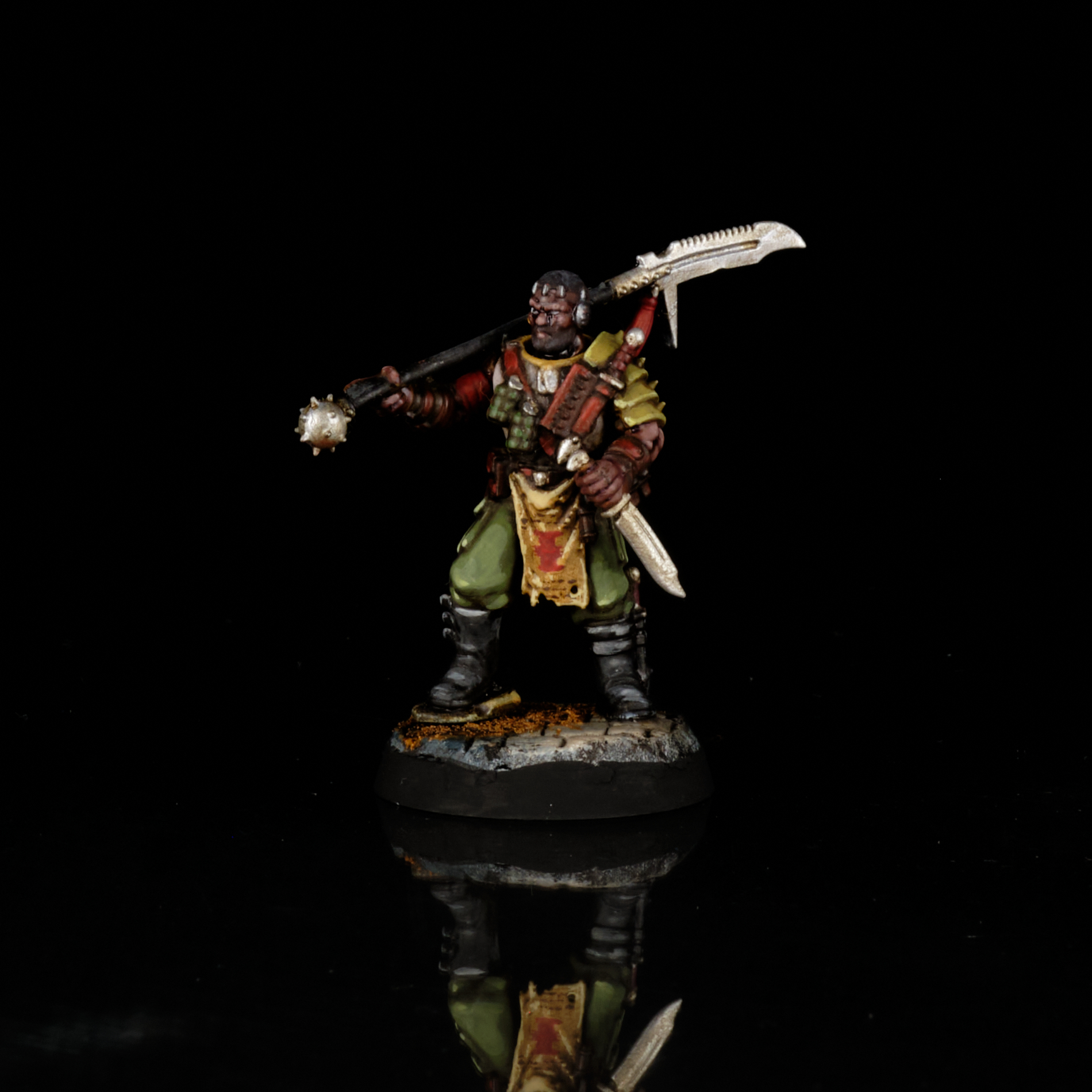
Strategic Ploys
Denounce (1 CP) is an incredible tool that can stop an opponent dead in their tracks – once per battle you can use and roll a D3, picking an enemy operative. That operative has GA 1 and can’t be activated or perform actions until either every other enemy operative has been activated or a number of other operatives equal to your D3 roll have been activated. This is going to give you the most value when you use it on TP3 although it can prevent a big play from the enemy in TP2 with the right circumstances. You want to feel this one out and not blow it too early.
Intense Scrutiny (1 CP) gives us an improved threat range. If we play against elite teams it can be very useful to not only threaten with the grenade but also with the holster. Its use is situational, but it is a powerful tool in the first turning point.
Quarry (1 CP) is our bread and butter – where to place it and how to make it really sing is fundamental to making this faction work. In general when we have the initiative it is easy to make it work, but when you don’t have the initiative you should throw it to an operative that we know is going to try to attack us or (And this is a big or), an operative which, if he flees, will be a big loss for the enemy’s damage output and ability to be aggressive.
Tactical Ploys
As for tactical ploys, in addition to absolute authority Embedded agent (1 CP) can be fundamental to win the initiative of tp1 in missions like loot or generate an extra threat with a dash when you select the Scouting option.
The Emperor’s Will (1 CP) is a wonderful but situational ploy; it’s more useful in he current meta where there’s so many effects which give -1APL, and great for avoiding effects which would leave you hitting on a 5+.
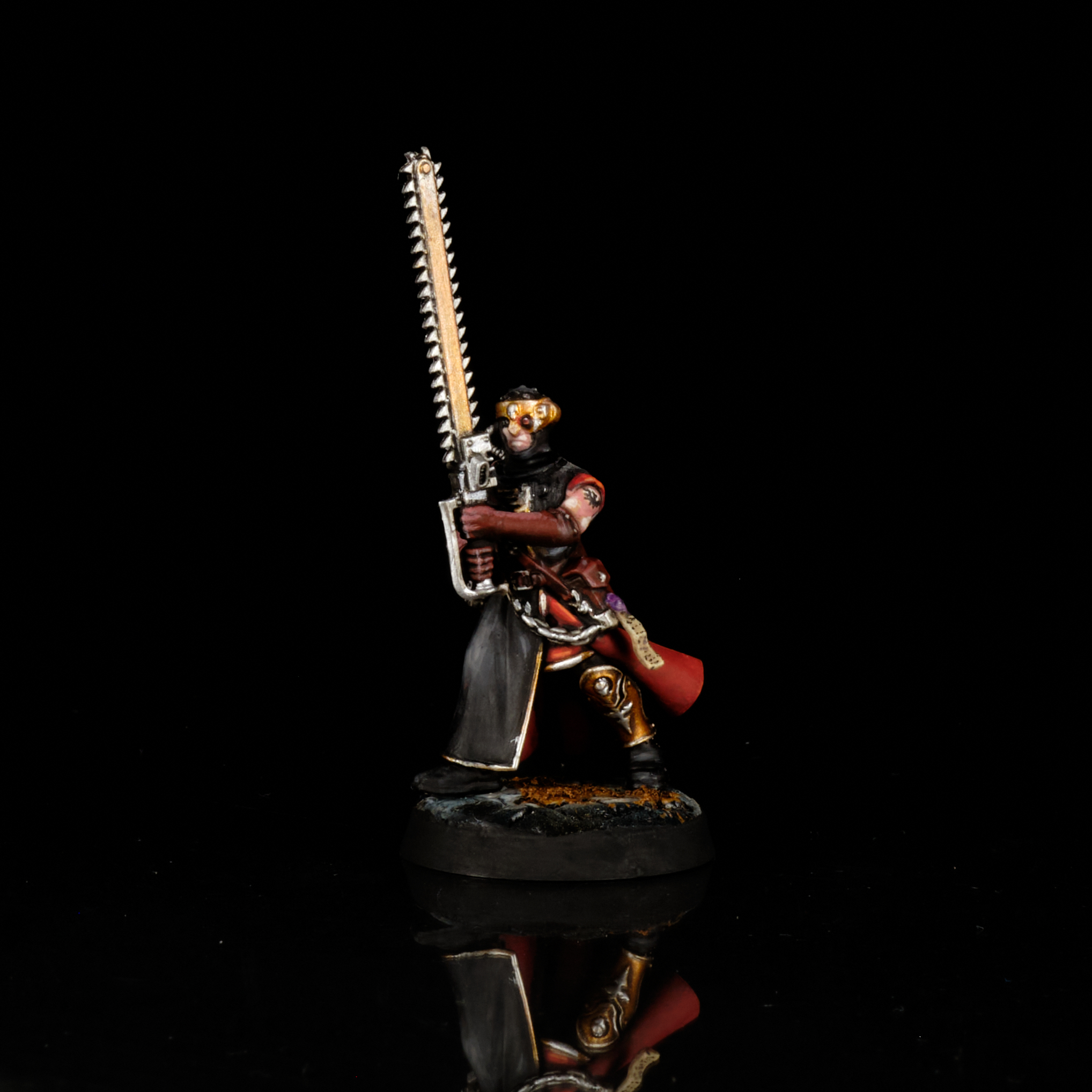
Among the 3 tac-ops we have only 2 are not a meme (I´m looking at you no witness). Seize for interrogation is the most usual one, especially good against teams that are coming at you and especially good combined with Rob&Ransack where you can score 4 points in the last turn turning the scoreboard upside down.
On the other hand investigate lead is only good in ITD in some maps that allow you to finish it with a lot of confidence.
Among the generic tac-ops this team plays very well Seek & Destroy (R&R, guards or Rout + Faction). Or recon on ITD ( rooms, recover item+ faction). There is even some merit on Infiltration (Gather survillance, Seize defenses, Faction). So it’s up to the player to take a good look at the map, and opponent faction before choosing them.

The Game Plan
About the battle plan, we are a horde and therefore we must press the opponent from the beginning, the idea is to punish him very hard in the first turn if possible, either with the grenade with +1APL to reach objectives markers in open maps(even better if the grenade is blessed by the mystic). If we can not punish because the enemy has defensive mechanics as smokes, we must concentrate on trying to score a 4-2 in TP1. The way to do it will depend on the mission
On Loot (A):
In A it can be vital to play fast and maybe have a double scouting. In any case if the enemy loot it carelessly we must prepare to punish him (Either with a charge of the veteran or with grenade) we shall ensure the 4-2 or at least make the opponent lose miniatures in the process.
In Secure (B)
On secure we can do it by using the mystic (With move+skull) that with its 3APL can change the point in our favor in B, Also you can use the comms to put +1APL on a model and then try to steal the point. We should always have 2 threats that make that on secure, the enemy no matter how much he plays into the objectives will always leave us the opportunity to flip the objective.
On Capture (C):
Capture is the most complex to be able to get the said 4-2 since many factions can react and put many APL in the points, here we will play just to punish as much as we can and maybe prepare a more explosive TP2. We can also try to make it with the mystic and with the +1APL given to a miniature that is already in the point putting 3Apl on both central points.
All this changes on ITD because the points are at different positions. In any case it is still true that we can apply a lot of pressure on the points with the scouting dash and the pistolera with Skull for example, which will make the opponent not to play comfortably at any time.
Tips & Tricks
More than tricks, Inquisition needs an almost perfect positional game, being able to get to charges, use the shots when you should, having the quarry to jump when and where you want is fundamental.
On the other hand you must also master the use of smokes as well as the aggression (both at combat and objective level) of the first turns, another thing to master is the play of the different tac-ops in the different scenarios. Do you play against elites? Maybe it’s time to play Recon, Hordes? good time to take out S&D and a very long etcetera.
Inquisition is one of the most adaptable yet fragile factions in the game, if you lose key operatives you will quickly find that you can’t fight or shoot efficiently, if you give your enemy bridging charges he will soon reach your backline and you won’t be able to score.
A good tip is to learn to deal with frustration, in this team with so many operatives going 4+ it is inevitable that you will suffer some (or several) bad rolls. You must stick with the plan, you have plenty of activations, at some point those dice will eventually come in.
Final Thoughts
After the most recent Kill Team dataslate, Inquisitorial Agents are one of the factions with the biggest toolkit in the game. Played properly they are already taking huge tournaments (See La Cabra Norteña). It’s a team that requires dedication, games and a huge state of mental calm, but if you get it all right it pays off with good tac-ops and better chances on the board.
So don’t make me repeat myself, interrogator – grab your squad and proceed to purge those damn Xenos or Chaotics who infest the galaxy. May fortune smile upon you and faith protect you brother.
Have any questions or feedback? Drop us a note in the comments below or email us at contact@goonhammer.com. Want articles like this linked in your inbox every Monday morning? Sign up for our newsletter. And don’t forget that you can support us on Patreon for backer rewards like early video content, Administratum access, an ad-free experience on our website and more.
